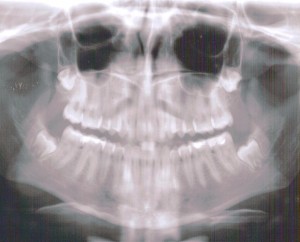It seems like only yesterday that my phone was connected to the wall with a long, curly cord and I was woken up every day by an alarm clock instead of the alarm on my smart phone. But times have changed and dentist offices are right in stride with the rest of the world in technological upgrades.
For today’s blog, we caught up with Eric Jess of Medix Dental, one of the primary dental IT companies Primus works with, who brought us up to speed on 5 hot tech items now in demand for dentist offices.
1. The Tablet
iPads and Android tablets are pretty common these days and are becoming increasingly popular amenities in dentist’s offices. At check-in, many patients are being handed a tablet instead of Ye Olde clipboard to fill out their information. This electronic system helps streamline the check-in process and eliminates paper waste.
Tablets will continue to become increasingly popular as dental software becomes more tablet-compatible and wireless in these offices universally meets HIPAA privacy standards.
 2. Scanners and Paperless Charts
2. Scanners and Paperless Charts
Scanners aren’t a new technology, however they are being used more than ever to help convert the standard dental paper chart filing systems to electronic charts. Going paperless has multiple advantages for dental offices including less waste, extra space, and more convenience.
In many offices, instead of having to go through rows of charts and pulling the correct ones, office employees can simply pull information up on their desk computers or view them on the computers in the operatory or treatment rooms. It also allows dentists to have access to these charts remotely in case they are away from the office.
When designing offices, the upgrade to going paperless allows Primus more flexibility to reclaim some of the old storage space for extra office amenities. Say goodbye to those filing cabinets!
 3. Digital X-Rays
3. Digital X-Rays
In the past, dental X-rays were developed using film processing which involved the use of various chemicals and took time to create. Now, dental X-rays have gone digital, meaning the computers can take the picture and it will pull up within 2-3 seconds directly on the computer in the treatment room. In addition to the reduction in chemical waste, this also exposes the patient to less radiation and significantly speeds up the X-Ray process.
4. Compact Computers
When they were invented, a computer could fill a 20 by 40 foot room. Now, we offer computers that are about the size of a box of golf balls–about 3-4 inches long, 1.5 inches thick, and 3.5 inches wide.
In addition to getting smaller, this tech is getting smarter. They are more energy-efficient so they don’t get as hot as they operate, which extends the longevity of the computer and causes them to break down less frequently.
Often these computers are attached behind the monitor or are mounted on the wall, which frees up counter and cabinet space. This extra space allows for additional flexibility in the design of the offices.
5. TVs
Again, while the TV itself is not a new technology, there are new applications for it. Many dental offices now have TVs mounted on the ceiling so patients getting dental work done have something to entertain and distract them. Dentists can also switch these TVs to PC mode and pull up images of the dental work to show the patient.
Instead of sitting up and turning to view an X-ray on a lightbox, the images are displayed on the TV for the patient and are easily controlled by the dentist. Inter-oral cameras can also be plugged directly into the USB input on the computer or monitor to display dental work for patients.
When it comes to technology, Primus has to be mindful of updates when we design dentist offices . This way we can assure we have provided the correct infrastructure to cater to the needs of the doctor. This includes making sure the conduits and cabling are going to the correct locations. These things are very difficult to change or add in as an afterthought.
So if any of these technologies are of interest to you, please talk to me about how to design them into your new office!
~Jason









